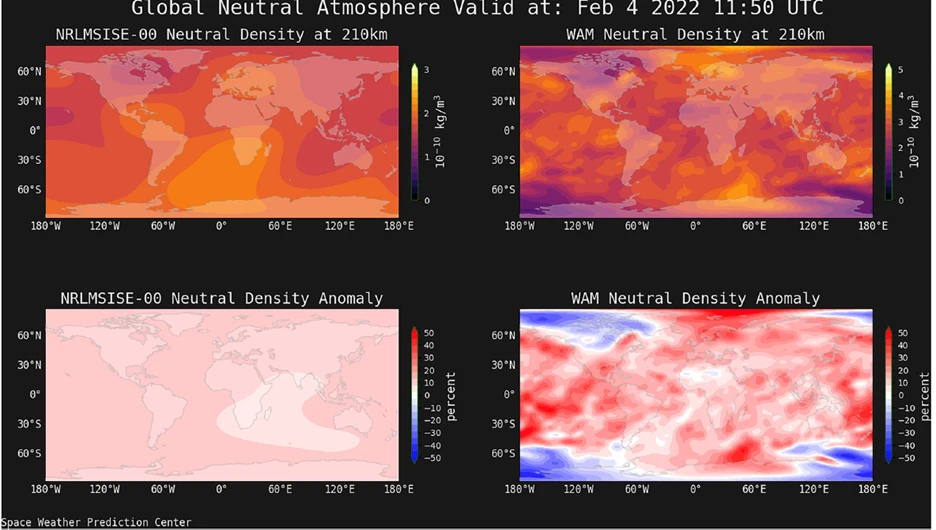WAM-IPE Model Updates
December 2024
The Whole Atmosphere Model-Ionosphere Plasmasphere Electrodynamics Model (WAM-IPE) is upgraded to version 1.2.5 at the CCMC for the ROR simulation service. Previous version 1.2.4 is retired.
September 2024
As of September 6, 2024, the Whole Atmosphere Model-Ionosphere Plasmasphere Electrodynamics Model (WAM-IPE) version 1.2.4 is available to the research community through the CCMC Runs-on-Request service.
WAM is a physics-based whole atmosphere model and an extension of the global spectral model dynamical core, GFS, extending to approximately 3x10^-7 Pa. The WAM system is used to quantify the impact of lower atmosphere weather on the upper atmosphere and ionosphere, as well as the response to solar and geomagnetic activity. WAM is coupled one-way to IPE.
IPE is a physics-based model of the ionosphere and plasmasphere extending up to approximately 10,000 km. It is a time-dependent, global, three-dimensional model that provides densities, temperatures, and velocities of ions and electrons from 90 km to several Earth radii.
Caveat: In the CCMC Runs-on-Request setting, WAM-IPE is free-running without data assimilation. There is nothing constraining the lower atmosphere as in the operational WAM-IPE Forecast System (WFS).
March 2023
As of March 28, 2023, NOAA/SWPC WAM-IPE runs output between July 2021 to July 2022 are available at the CCMC.

WAM-IPE runs output between July 2021 to July 2022 from SWPC are publicly available to users: https://ccmc.gsfc.nasa.gov/external-runs/swpc/ionosphere/WAM-IPE/WAM-IPE-July2021-22/index.html, hosted by the CCMC. Note that there exist few data gaps in the available model output due to the WAM-IPE operational issue and/or operational drivers are not available at the period.
WAM-IPE native runs provide neutral atmospheric parameters from the ground to the upper thermosphere at around 500 km, as well as ionospheric parameters from ~90 km to 2,600 km in altitude. The modeled neutral density is extended all the way to 1,000 km with a proper assumption of helium in the exosphere, which is offline post-processed and archived in the post-processed folder in each date folder (located at postprocessed/wam_fixed_height.gsm10*.nc in each date folder).
WAM was developed based on the spectral version of the National Centers for Environmental Prediction Global Forecast System (NCEP GFS) used for medium-range numerical weather prediction. The WAM system is used to quantify the impact of lower atmosphere weather on the upper atmosphere and ionosphere, as well as the response to solar and geomagnetic activity. To follow real lower atmosphere weather events, data assimilation in the WAM lower atmosphere (WDAS) was developed with a modified version of the grid point statistical interpolation three-dimensional variational data assimilation system, with Incremental Analysis Updates (IAU) to spread the increments over the 6-hr assimilation window. IPE is a time-dependent and global three-dimensional model that provides densities, temperatures, and velocity of ions and electrons from 90 km to several Earth radii. For more info, please check the reference list.
